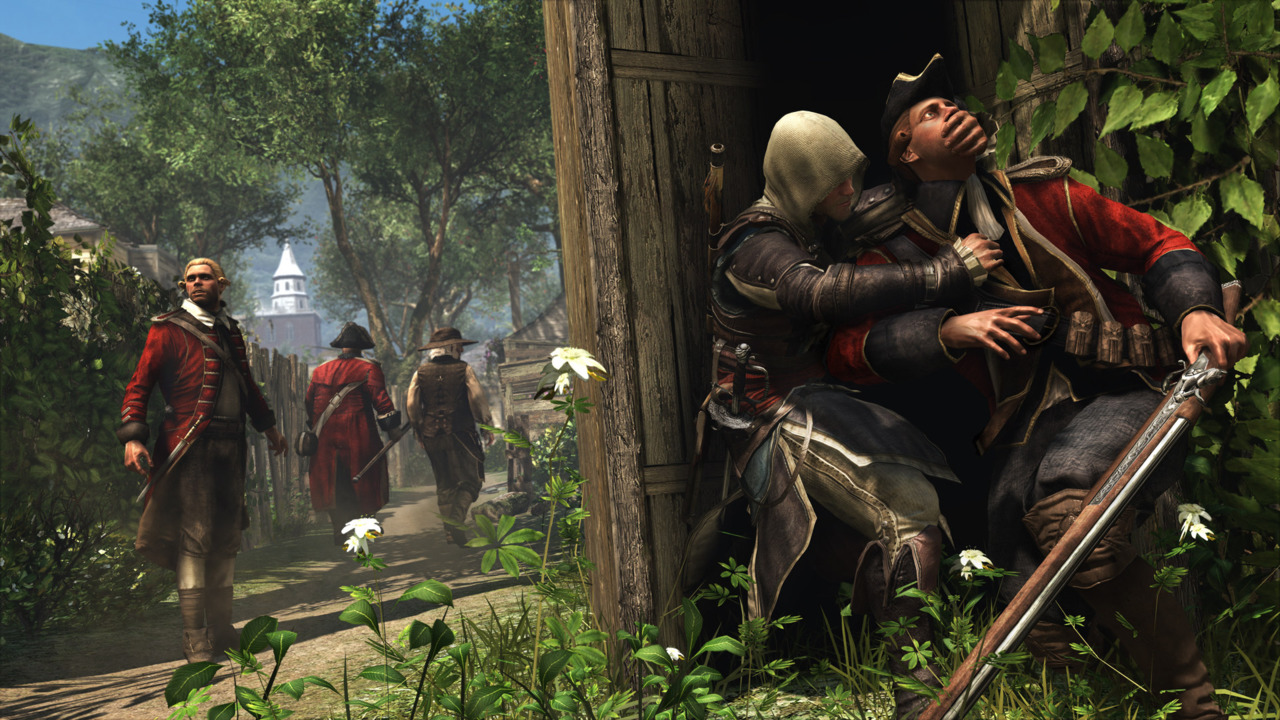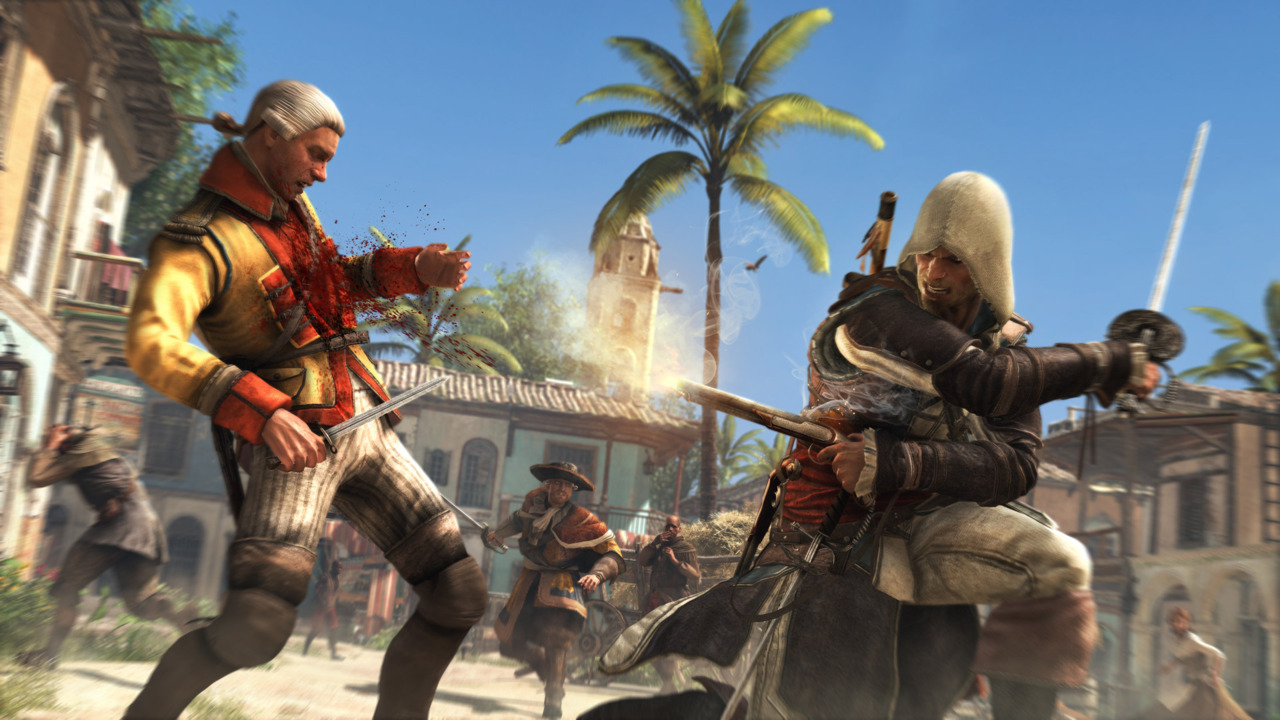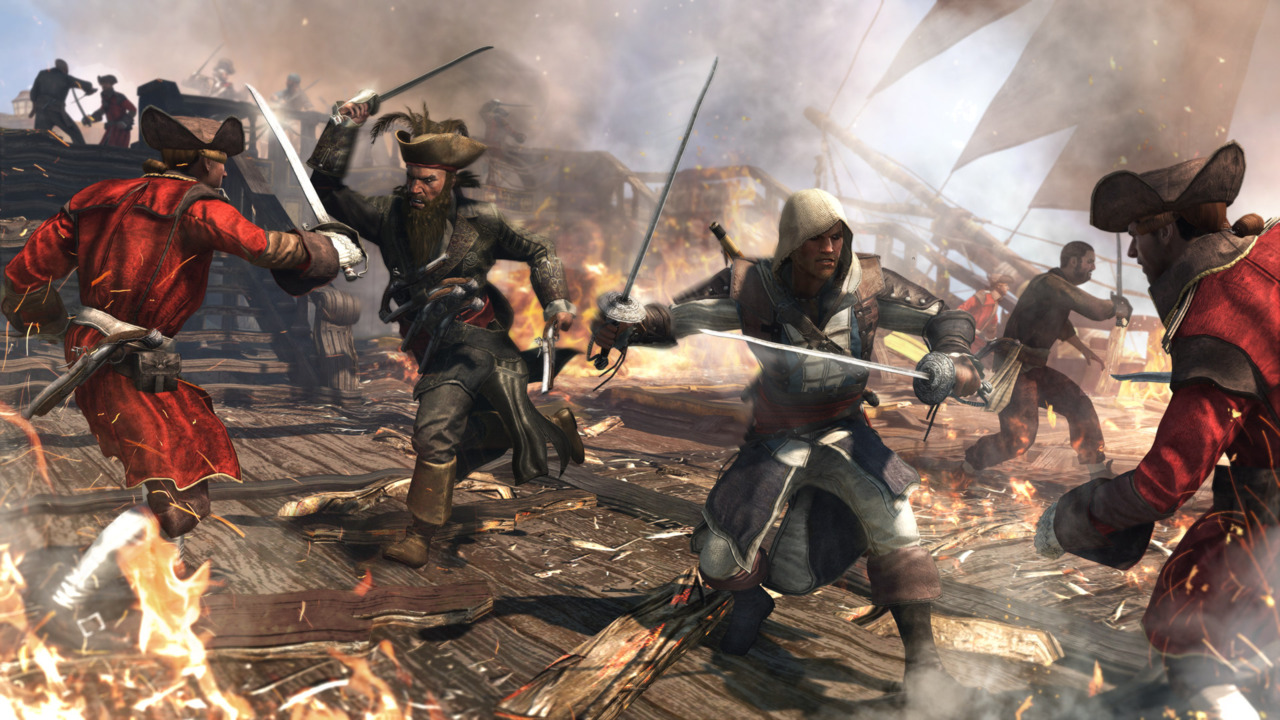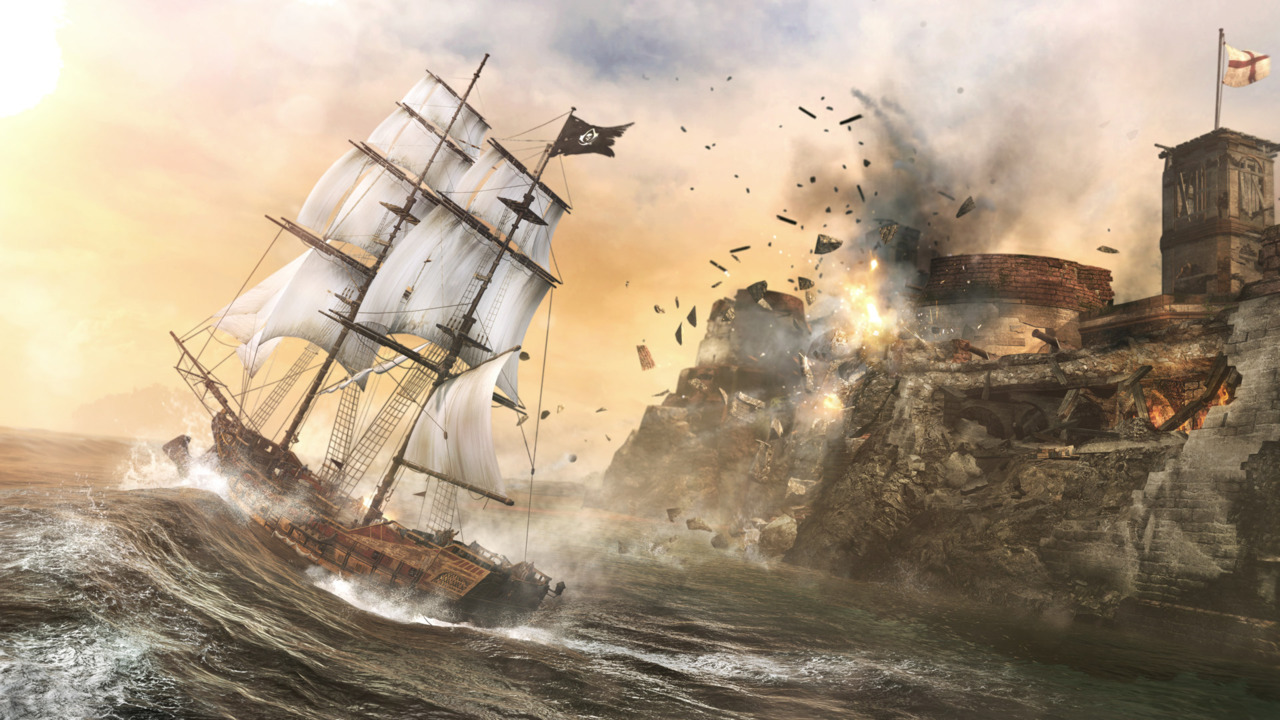I have an obsession. A synchronization obsession.
I love many things about the Assassin's Creed series: the free-flow parkour, the historical fantasy, and the gorgeous audiovisual presentation among them. But my favorite part of the Assassin's Creed gameplay loop is map synchronization. When entering Venice or Acre, my first order of business was always to seek out the towers and steeples that offered proper vantage points. For me, the reward isn't the lifting of the fog of war from that area of the map, but the moment you survey the landscape. The camera swivels around you so that you might see a sun-drenched Constantinople or the Roman countryside before you, and a subtle melody underscores the drama. Then, you make that thrilling leap of faith into a haystack or cartload of leaves hundreds of feet below.
That moment of synchronization embodies Assassin's Creed for me. The joyous climb, the breathless survey, and the stimulating dive to the ground are a key component of the experience. They encapsulate the sheer freedom of the Assassins. After all, the name Altair comes from an Arabic phrase meaning "flying eagle."
Assassin's Creed III had synchronization of course, but while I loved that game, the actual act of syncing had lost its joy. The musical cues had lost their character, and the New World architecture didn't have the grandness of the Middle-Eastern and European architecture that had captured my imagination in games past. When I played Assassin's Creed IV: Black Flag a few weeks ago, I was surprised and relieved to discover that synchronization had regained its sense of wonder. Most importantly, the music had color--and the musical cue changed when I synchronized in different locales. It was like Ubisoft had rediscovered the spirit of the Assassins.
It came as no surprise, then, when mission director Ashraf Ismail told me that their main inspiration for Assassin's Creed IV was… Assassin's Creed II. I saw the connection Ismail was establishing, but also wondered if he felt AC IV might build on III in ways similar to how the second game in the series built on the first. He told me the team had never thought of Assassin's Creed IV in exactly that way, but I think the analogy is appropriate. Assassin's Creed II took the raw ideas of the original game and formed a grand adventure around them. And based on my time with the game's single-player sequences, Assassin's Creed IV has taken the best ideas of its predecessor and molded them into a cohesive whole.
It isn't just the renewed drama of the synchronizations that make me think that, but a new sense of meaning given to mechanics that meant too little in Assassin's Creed III. Remember chasing those almanac pages? It was nice to speed across the Boston rooftops, but the reward--unlocked excerpts from Poor Richard's Almanack--never felt like a proper reward for the effort. In Assassin's Creed IV, you chase after musical manuscripts that unlock sea shanties for your crew to sing as you sail across the sea. These tunes are a vital part of the game's seafaring atmosphere, and thus a better return on your time investment. Where I eventually ignored Ben Franklin's flying sheets, I chased every shanty I stumbled upon. My glee rose when I heard my crew lustily chant recognizable tunes like Loch Lomond. (Well, recognizable to me, at least.)
In fact, I chased almost everything I stumbled upon. I followed the story for a while, joining protagonist Edward Kenway as he learned the ropes from famed pirate Ben Hornigold and exchanged salty pleasantries with a swashbuckler called Kidd, a young pirate who clearly has a few secrets to hide. The story missions had me tailing a target on both land and sea, shooting cannons at sloops from behind the wheel of the Jackdaw, and activating eagle vision so that I could identify wild animals and hunt them down for their hides. But I was constantly sidetracked by optional activities, which is a good sign for an open-world sandbox.
Take, for example, my time at sea. When glimpsing a ship in the distance, I used my spyglass to discover what kinds of booty the sloop was transporting. Inspired by the promise of riches, I sailed towards it only to pass a lone sailor hanging on to a crate for dear life floating among the waves. With a press of a button, I snatched up the survivor and made him part of my crew, which is an important resource if you hope to be a formidable oceanic foe. When I reached my target, I slowed it down by slinging chain-shot at its sails before firing my cannons. Then, when the enemy ship was weak enough, I closed in to board. While my crew initiated boarding procedure, I took control of a swivel gun and brought down some pesky pirates before I ever needed to board their vessel. And once aboard, I slashed up the enemy crew until it surrendered and I could make off with the bounty and a few more crew members to assist me on the Jackdaw.
Every element of this experience was built upon ideas introduced in Assassin's Creed III, but the game delivered them in a seamless fashion, with mechanics that felt complete rather than prototypical. The game smartly chooses what weapons you fire by how you turn the camera; you can even throw explosive barrels overboard in this manner, and then shoot at them to cause fiery mayhem. The boarding process then follows naturally, letting you board however you like, whether that means swinging in via mast rope, or eschewing the melodrama in favor of just jumping on. The swordplay that follows has that rhythmic Assassin's Creed feel, with you slashing, countering, and yanking weapons from the hands of your combatants.
There are some important distinctions, however, that make Edward Kenway feel like a dirtier cousin to the assassins we've previously come to know. Kenway has a sinful swagger while he fights, rather than the muscular grace of Altair and Ezio. He's more concerned with efficiently dispatching his foes, and the brutal animations confidently communicate as much. Even Kenway's method of opening a treasure chest betrays his impatience; where Ezio and Connor would manipulate the chest with their hands, Kenway just kicks it with his boot. And where Ezio and Altair somehow managed to keep their flowing robes immaculately clean, Kenway's clothing and face are smeared with the signs of recent scuffles.
Newly invigorated mechanics aside, it's how the game recalls my many hours with Assassin's Creed II that has me most excited. As I navigated the ramshackle paths and lush lots of Nassau, I visited pigeon coops (or were they doves?) to take on assassination missions that reminded me of my days in Florence. I recruited new crew members by rescuing scoundrels from the menacing local authorities, just as I recruited assassins as Ezio. I even solved puzzles by activating eagle vision near Mayan artifacts and aligning images to discover buried treasure locations. These moments reminded me of the glyph puzzles of Assassin's Creed II, though I have no idea if these puzzles somehow impact the present-day story that frames the series. In fact, I have no idea how that story is intertwined with Kenway's adventures, though I suspect that I might be in the minority by actually being invested in this aspect of the ongoing Assassin's Creed narrative.
I tried to coax some information on this subject from game director Ashraf Ismail by telling him of my theories regarding the modern-day conspiracy story, but he remained poker-faced, at least until I asked him if the ending would live up to series standards of mind-melting revelations.
"You won't be disappointed," he told me, before once again going mum when I told him the details of my "Desmond is alive" theory.
My theory that Assassin's Creed IV will make good on the promise of Assassin's Creed III, on the other hand, doesn't seem so far-fetched. Not only does it deepen the mechanics of its predecessor, it recalled the emotions I had while playing Assassin's Creed II, the game I consider to be the best in the series.
If anything else, it seems that the uplift of a good synchronization will be making a return. Altair "Flying Eagle" Ibn-La'Ahad would be pleased.
'



